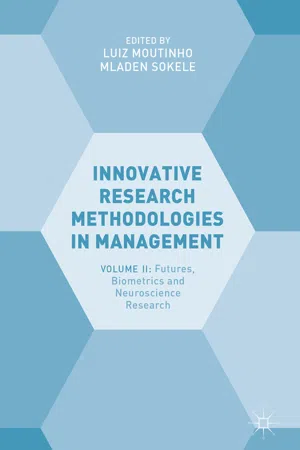Introduction
In forecasting and/or de cisio n-ma king conte xts, when quantitative data are insufficient or totally absent, subjective judgments are of extreme usefulness. Generally, no one individual has the sufficient expertise and knowledge to make the best forecast or to take the best decision , thus all along organizations have sought to gather the opinions of groups of individuals in an attempt to combine their skills and improve decision-making (Riggs 1983).
However, having a team of experts is not enough, because the way their views are collected is crucial, and without a rigorous methodology, any consultation process may become vain. Traditional methods of grouping experts, such as focus groups or face-to-face interviews, are very popular but have quite important drawbacks. In what we call here “interacting groups”, compromise decisions are often reached, rather than consensus decisions , and the distortive factors of the interacting groups are widely discussed in the scientific literature (Van de Ven 1974; Riggs 1983; Di Zio and Staniscia 2014b; Grime and Wright 2016).
Following is a summary of such distortions:
The effect of the leadership : When the highest-ranking of a hierarchy (e.g. military, political or academic) or a particularly dominant person expresses an opinion, the others usually tend to follow that judgment, in spite of contrary feelings. Thus, not everybody expresses thoughts freely, for the fear of coming into conflict with the leader. In other words, dominant personalities influence the group, and low-status members tend to go along with the opinions of high-status members (Torrance 1957; Chung and Ferris 1971).
The spiral of silence : Those who agree with the ideas of the majority are more likely to feel confident in expressing their opinions, while those who are in the minority fear that manifesting their views will result in social ostracism; therefore, they are inclined to be silent. These perceptions can lead to a spiraling process, in which minority’s views are increasingly restrained and, as a consequence, under-represented (Neill 2009).
The groupthink factor: This distortion occurs when the pressure to conform within the group interferes with the group’s analysis of the problem, to the point of producing poor decisions (Hoffman 1965). When the members of an interacting group strive for reaching a broad consensus , their motivation to assess alternative courses of action is affected, and the independent thinking is lost, in the pursuit of group cohesiveness (Hassan 2013). The expression “groupthink ” indicates the situation in which, when searching consensus , in order to minimize the conflicts, the individuals renounce their ideas and opinions.
There are several ways to manage the previous distortions, for example, by avoiding face-to-face contacts and structuring the interactions anonymously. The aim is to prevent the association of the opinions to those who have expressed them, avoiding the errors arising out of the effect of the leadership and the spiral of silence . Moreover, instead of collecting the expert’s judgments at one time, in the same place and within a limited time, one can structure the consultation in an iterative framework and asynchronously (i.e. at different times). By collecting the evaluations iteratively, the participants can review at least once their assessments, perhaps with the possibility of comparing them with the answers provided by the other experts of the same group (controlled feedback). The possibility for the members to interact at a distance and at different times eliminates the pressure to decide quickly, within a given time limit, so avoiding the groupthink bias.
The anonymity , the iterative structure and the asynchronous communication are the most used strategies for the elimination of the distortive effects typical of the interacting groups. All these features are present in the Delphi method , a very popular iterative technique for collecting expert’s opinions, conceived to achieve consensus on a particular issue. Dalk ey and his associates developed the Delphi at the RAND Corporation, a research institute founded in 1946 with the financial support of the US Department of Defense (Dalkey and Helmer 1963). S ince its invention, the applications of the method were numerous, and over the past 60 years, many other methods related to it have been developed.
In this chapter, we briefly explain the origins and the evolution of the Delphi method , up to two recent variants, the Spatial Delphi and the Spatial Shang, specially designed to treat problems related to the territory. With these two methods, the judgments of the experts are collected by means of points placed on a map, and the process of the convergence of opinions is built up with simple geometric figures (circles, rectangles or strips). During the iterations, the figures on the map move and become smaller and smaller, until to circumscribe a small portion of territory that represents the final solution to the research/decision problem. After the description of the methods and the presentation of the early applications, we discuss some possible evolutions that most likely will produce a future increase in the use of these techniques. In particular, we will talk about the Real Time Spatial Delphi, a rea l-time version of the Spatial Delphi.
